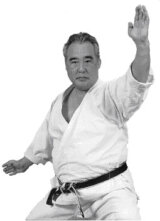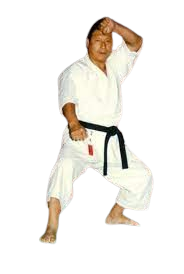Karate e autismo... dagli Stati Uniti dei segnali importanti
progetto K.A.D.A. > Karate Tradizionale e patologie
E. Paul Zehr Ph.D. E. Paul Zehr Ph.D.
Black Belt Brain
Martial Arts and the Autism Spectrum
Patterning in martial arts may help reduce stereotypic activity in autism.
Posted Nov 15, 2012
Autism spectrum disorder (ASD) (link is external) refers to those who have difficulties with social interactions and communications. Across people there can be a huge variability in presentation of so-called “symptoms," hence the use of “spectrum” in the overall term.
I’m not a big fan of labeling, so now that I’ve got this out of the way, for the rest of this post we’ll just talk about the “autism spectrum” and not “people with," those “disabled” by, etc. It is what it is and lots of people do very well and have great lives. I don’t want to diminish them by using even accidentally pejorative language. Instead I want the focus on the potential everyone has.
In the autism spectrum, issues arise related to verbal and non-verbal communication, and social interactions involving emotional sharing and empathy. Behaviors where the same word, phrase, or movement is repeated in an almost or actual “obsessive” pattern are also often seen.
A common feature in the autism spectrum is performing stereotyped and repetitive movements. Which is kind of interesting for a different reason. This is also how you get better at motor skills—repetitive practice is the foundation of skilled learning. Particularly in traditional martial arts training.
With this in mind you might think that somebody in the autism spectrum should avoid doing repetitive physical skill training. That is, shouldn’t a physical practice routine that involves repeated punches, kicks, blocks, continuous patterns, etc. make things worse?
Apparently not, seems to be the answer. It’s got to be admitted that there is currently limited scientific evidence related to this question. But there is some. There are also the anecdotal experiences of those who have been involved in martial arts training with those in the autism spectrum.
A recent study by Fatimah Bahrami and colleagues at the University of Isfahan in Iran (link is external) showed some amazing results. Thirty kids aged 5-16 who had been diagnosed with autism spectrum disorder were in their study. Half the kids were the “control” group and the other half participated in 3 months of training in traditional karate kata (pattern).
Kata form the backbone for technical learning in traditional Japanese martial arts. These involve repeated sequences of attack and defence put together within a patterned structure. Kind of like a gymnastics or figure skating routine. But for self-defence!
In this study a scale to assess “stereotypy” was used with both groups before the training period, immediately after, and one month later. The kata training lead to a large and significant reduction in stereotypy that was still there one month after the training had stopped! This was a very clear result and is the best scientific evidence that martial arts training could be an effective method for positively affecting motor activity in the autism spectrum. This study corroborates some other similar but smaller and informal studies that have appeared (link is external).
Additionally, and I’ll admit this is anecdotal, but during my 25+ years of teaching martial arts I have had several students in the autism spectrum. They have all benefited positively from the training. Not only did they improve in actual skill at martial arts (link is external), but the parents reported positive effects on other activities at school and in the home.
For older readers, now is the time for the $64 000 question—why might this be so? Understanding why means pointing out better how to improve how to apply these ideas going forward.
Here’s what I think. And I will say up front that this is my speculation. This is not based on any scientific investigation but rather on my experiences as a martial arts practitioner and teacher and as a neuroscientist. I think it has to do with the activity being repetitive activities that are externally-cued.
A huge part of the teaching methodology in traditional martial arts involves visual training. In the example above, trainees watched the teacher or “model” perform the movements in the kata.They then either repeat the movements themselves or follow along supplemented by verbal and physical feedback to correct and improve the movements learned. This is a very typical training methodology and is what I meant by externally-cued.
At least initially, the timing of the movements and the way to perform them are taken from watching an expert perform. So the learner is basically following along with what s/he is seeing. Their movements—which are derived from complex activity in the motor planning and output areas of the brain—are obviously produced “internally”. But they are cued externally.
Even with lots of training where complex martial arts techniques have been well learned and essentially become automatic, there is still a huge component of “external cuing”. That’s because martial arts movements represent attack and defence sequences. So they are always externally cued even when practiced without a partner. There is always an attacker—either real or imagined—to trigger the responses.
This contrasts with repetitive stereotyped movements that are often seen in the autism spectrum. These are more often internally triggered by the person themselves. They can occur independently of obviously related cues in the environment.
My speculation is that this is related to something very interesting that goes on in group activity of collections of neurons in the brain. They can get entrained into certain rhythms and patterns of activity. For example, in extreme injuries like a limb amputation, collections of neurons in the sensory and motor parts of the brain can change their activity patterns.
Those neurons can then do some very odd things. Like continuing to be active as if they were still connected to, controlling, and sensing the limb that has been amputated. This produces a “phantom limb”. A limb that is not there physically but which persists neurologically. You can feel it but it isn’t there. And it can often have a lot of pain associated with it. How do you get rid of the feeling of pain in a limb that does not exist?
The way to break the unusual activity in the brain is to provide something else that interferes with it. Vilayanur Ramachandran and colleagues at the University of California at San Diego (link is external) have taken a clever approach to this. They tried to trick the brain into thinking the missing body part does exist. Using a split mirror set up (often a “mirror box” is used), a person can see the other side of their body on the mirror side.
Using this kind of setup with someone who has an amputation creates the visual illusion of another intact arm. If participants carefully study their movements and do different tasks with the intact limb while looking in the mirror it will seem that the amputated limb is actually moving and feeling sensation.
Over many sessions of practice, the sensation of the phantom limb will often be reduced or disappear. This is pretty wild sounding but it appears to be grounded in the fact that our brains put the most weight on vision. If vision says there’s an intact limb there that isn’t feeling any pain, it will override the conflicting information coming from other parts of the brain.
So why does this matter? My suggestion is that the use of an external movement pattern becomes the context that is now used to frame the subconscious brain activity of the person doing the training. In this way externally cued movement triggered by visual motor learning winds up changing motor related brain activity. In this way changes in overall brain function can then be seen externally.
It would be great to see more scientific research into this area. Currently, it seems that safe and effective traditional martial arts training (note: not just fighting practice) delivered by highly trained instructors can be another form of effective, and useful physical activity for everyone. Including those in the autism spectrum.
© E. Paul Zehr, 2012




